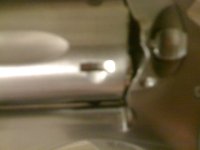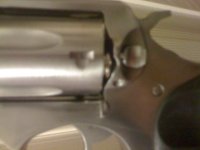I read and posted on mikechandlers thread but see that I am to new to revolvers so.....
With my used sp101(my first revolver) not only did I have issues with grouping(my fault), I had empties getting stuck in the chambers. Twice it required a screwdriver to remove the empties, I read about fouling being a problem so...
When I got home I cleaned it and now the rounds fall out without using the ejector rod(when turned upside down)...I am confused!
1. Does ammo in a revolver fall out of the cylinder without use of the ejector?
2. One of the chambers does not seem to "hold" in the round...when inverted it slides out when locked up(pics included). Is this normal?
I am comfortable with semi-autos but am totally new to revolvers and am not sure if I have a lemmon or if I am the issue.
With my used sp101(my first revolver) not only did I have issues with grouping(my fault), I had empties getting stuck in the chambers. Twice it required a screwdriver to remove the empties, I read about fouling being a problem so...
When I got home I cleaned it and now the rounds fall out without using the ejector rod(when turned upside down)...I am confused!
1. Does ammo in a revolver fall out of the cylinder without use of the ejector?
2. One of the chambers does not seem to "hold" in the round...when inverted it slides out when locked up(pics included). Is this normal?
I am comfortable with semi-autos but am totally new to revolvers and am not sure if I have a lemmon or if I am the issue.
Attachments
Last edited:


